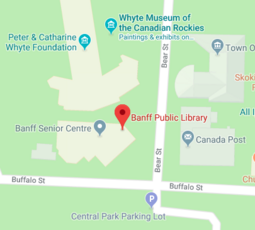Taste of Cultures Human Library Project
Download to Calendar:
Time: 2:00 p.m. - 4:00 p.m.
Cost: Free
Taste of Cultures Human Library project
Sample a taste of the Human Library Project and borrow a cultural cook book on Multiculturalism Day.
The Taste of Cultures Human Library Project is borne out of the belief that we all have much to celebrate about each other, our diversity and our connection with food.
The goal is to create a safe space where we can foster conversations between different people, from different backgrounds and encourage new connections between community members, to better understand the life experiences of others as related to food, its ties to their culture and their sense of belonging.
Who doesn’t delight in speaking about food, its traditions, how it brings people together, and nourishes our mind, body and spirit?
Our three books are a small sample of the diversity of multiculturalism in the Bow Valley, representing French, Japanese and Tibetan food.
Read the bios of the three human books and reserve here to borrow them for 20 minutes on June 27th.
"A Table for 8 Please - the French Art of Gathering."
Wanaka, New Zealand, my Italian friend: "What would you like to do for your birthday?".
Me: " Usually for my birthday I would cook all day and have my family over for dinner. I would love to do this but I don't have a place where I can host"
My friend: " You could use my place, this will be my gift to you".
I instantly thought about what I was going to make and how to organize my dinner.
Of course, I made Gougères for the Apéritif, followed by my Mother-in-law's special Scallops Tagliatelle and my Great-aunt's famous Mexican cake.
There were a few chefs amongst the guests but I was not intimidated, they all jumped to help and followed my lead. Then, while we were eating, I contemplated the satisfaction
on their faces and my heart was full.
I am convinced that "Food tastes better when shared". The author who grew up in a French farm, later started a career as a Baker / Pastry chef.
In her desire to always share more about her passion, she will speak about traditional Burgundy hospitality, the importance of gathering, connecting and savouring food.
She will speak to focusing on simple but flavorsome ingredients and will share some typical and entertaining recipes.
She will then unveil where to source some of the best ingredients in the Bow Valley and share advice for a successful dinner a la francaise !
Kaiseki Cuisine in the Japanese Tea Ceremony.
She started tea ceremony at the age of 9 at the suggestion of her mother and was certified as a tea ceremony professor, the highest rank, in 2002.
She was especially passionate about learning kaiseki cuisine and the tea ceremony during the 25 years she spent in Kyoto(1975-2000). Kyoto is the city where the most traditional Japanese culture and arts flourish, where the heads of the various schools of the tea ceremony reside.
In April 2006, she moved to Canmore with her husband, a photographer, to take
up permanent residence in Canada. Since then, she has been a member of the Omotesenke Tea Ceremony Domonkai in San Francisco and has been teaching tea ceremony in Canmore for 16 years on an irregular basis, which she also taught in Japan. Since coming to Canada, she enjoys Japanese food cooking and sweets using ingredients available in Bow valley and Calgary. She also occasionally offers tea ceremonies and kaiseki cooking at her home.
The Japanese tea ceremony now has come to be called "Chanoyu". In general, "tea ceremony" tends to be thought of as enjoying Japanese sweets and matcha, but originally, there is a special way to enjoy the tea ceremony called "Chaji". Chaji includes a dish of kaiseki cuisine and sake, seasonal Japanese sweets, thick tea, and thin tea to guests invited by the owner, and the time required is about 4 hours.
Sha Momo
Sha Momo, also called meat dumplings, is the most popular food in Tibet. Generally, Sha momo is made from yak meat. However, outside Tibet, people also use beef, or vegetables as the filling of Sha Momo. Every home has their unique momo recipe, even though they look alike, they have different tastes. Tibetan people use seasoned food materials to make their own Sha Momo. Typically, there are two shapes of Sha momos, the Round Sha momo, and the Half-Moon Momo. The only difference between these two Sha Momos is their shape. The filling of Sha Momo includes yak meat, garlic, onion, soy sauce, pepper sauce, ginger, and sometimes Chinese celery. After steaming the Sha Momos, you can enjoy the juicy and delicious dumplings.
Meet the author who is has been completing a Master of International Forestry at the University of the British Columbia and is currently working as an Intern in Banff. He is passionate about meeting the locals of the Bow Valley and sharing the similarities between his home at the base of Mount Everest and the Canadian Rockies.
On the day (June 27th) please arrive 5 minutes prior to your scheduled check out time at the Information booth.
A member of the library team will take you to your book and set up the timer. You will be given a 5 minute book return alert.
After the loan, you will be asked to complete an evaluation form.


